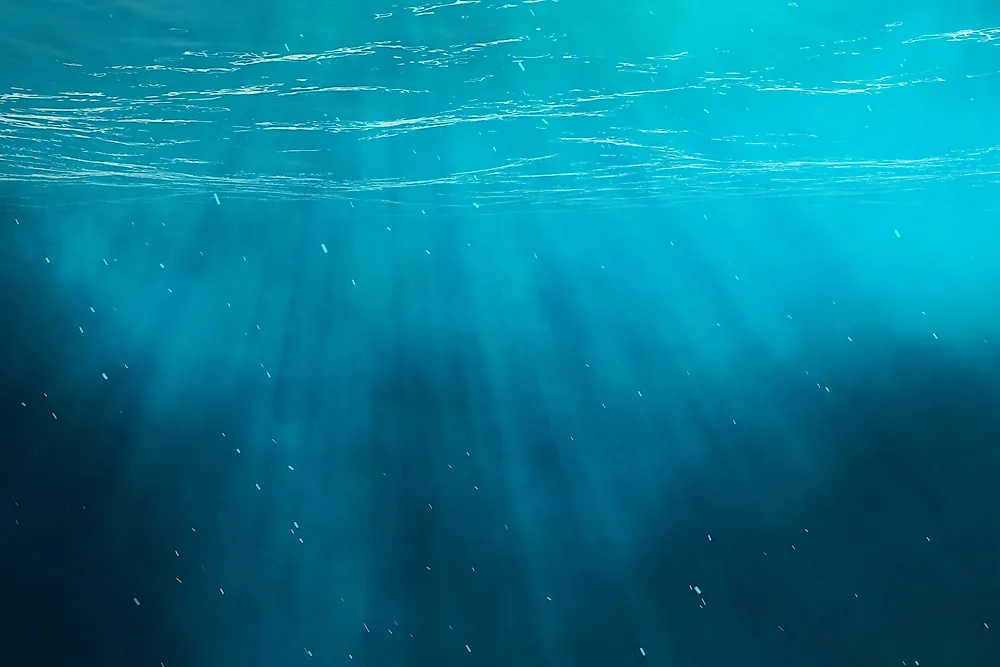The Deep Sea Ecosystem: Life In The Dark And Cold Waters

The deep-sea is a relatively mysterious and unknown part of the Earth, as only about 1% of the ocean floor has been explored by humans. In fact, there have been more missions into space than journeys down to the greatest depths of the oceans. Deep-sea exploration has revealed varied landscapes, which include volcanoes, seamounts, hydrothermal vents, and cold seeps. Different types of fauna also inhabit such ecosystems despite extreme temperatures, high pressures, total darkness, and zero oxygen levels. Some of the major ecosystems in the deep sea are described below.
Ocean Floor and Trench Ecology
Only about 1% of the sea floor has been explored by humans. In fact, humans know more about the surface of the moon than the ocean floor. Like land, the ocean floor is not completely flat, but features abyssal plains, valleys, deep trenches, massive mountains, and other undulations. For example, the mid-ocean ridge (MOR), which was formed by lava erupting from the Earth's crust and is the longest mountain range in the world, runs along the ocean floor for 56,000 km. In some parts, the sea floor drops significantly into deep trenches. The Mariana Trench in the Pacific Ocean is the deepest known trench, reaching a depth of 10,911 m below sea level at its deepest point.
While it might seem that forms of life would be unable to survive at such great depths, the ocean floor is inhabited by a significant number of species, especially echinoderms such as sea urchins, sea lilies, sea cucumbers, and starfish. The ocean floor is also inhabited by crabs, shrimp, worms, bottom-feeding fish, and bacteria.
Dead animals and feces falling from shallow waters, commonly referred to as detritus, form the base of the food chain in the ocean floor ecoregion. Rocky outcrops provide anchoring points for deep water sea life, which feed on and filter detritus from the water.
Ecology of Seamounts
While trenches and abyssal plains are low in marine faunal diversity, seamounts or subterranean mountains are densely inhabited by numerous species. The nutrient-rich ocean currents that circulate up the slopes of seamounts support rich marine life, which include sea anemones, sponges, and cold-water corals. In addition to species that grow on seamounts, these areas can provide feeding grounds for fish, worms, lobsters, and starfish. Seamounts can also contain endemic species, as they provide unique habitats that support the evolution of new species. For example, 850 species, most of them unique, were found in 24 seamounts near Tasmania, Australia.
Ecology of Deep-Sea Hydrothermal Vents and Cold Seeps
Volcanic activity on the ocean floor leads to the formation of hydrothermal vents or cracks in the ocean floor that allow water to seep through. When seawater enters hydrothermal vents, it becomes super-heated by nearby magma, which contains dissolved minerals and metals below the Earth's crust, and then comes back out to the ocean floor through geysers. Upon coming in contact with the much cooler ocean water, dissolved minerals and metals from the geyser cool and precipitate, forming chimney-like structures on the geyser. Despite high temperatures and the presence of toxic chemicals near hydrothermal vents, certain forms of life survive in these parts of the ocean. In fact, deep-sea hydrothermal vents are known to be inhabited by more than 300 species. Some are restricted to a particular vent field, while others are more widely distributed. Examples include shrimp, giant tubeworms, slugs, clams, anemones, and deep water fish. Bacteria that perform chemosynthesis using available hydrogen sulfide gas near hydrothermal vents form the bottom level of the ecosystem's food chain. Organisms that inhabit this part of the ocean floor can tolerate temperatures of up to 113°C.
Cold seeps are another type of deep-sea ecosystem in which chemicals from below the Earth's crust leak through cracks and reach the ocean floor. Such chemicals have the same temperature as the surrounding water, and therefore often remain suspended in water to create brine lakes within the ocean. These lakes tend to form in a depression on the ocean floor and have greater salt content than the surrounding water. Unlike hydrothermal vents, where hydrogen sulfide is utilized as an energy source, methane forms the basis of cold seep ecosystems. The deepest known cold seep ecosystem was discovered in the Sea of Japan at depths between 5,000 m and 6,500 m. The cold seep ecosystem also supports life that is highly specialized to live in such conditions.
Deep Sea Open Water Ecology
Open water makes up the greatest volume of the deep sea and is inhabited only by marine fauna, as plants are unable to grow given the absence of sunlight. The depth of the deep sea ranges from 200 m to over 10,000 m, such as Challenger Deep, which is the deepest point in the Mariana Trench. Water temperature decreases and as depth increases, with the deepest waters being as cold as 3 ºC. Water pressure also increases with depth, and most life on land would be crushed at such high pressures. Marine life that inhabit these parts of the ocean have special adaptations that allow them survive the extreme conditions. Despite the darkness of their habitat, many deep-sea creatures possess bioluminescent photophores that enable them to glow in the dark. Species that live in deep sea open water ecosystems are generally small with minimal bone structure, such as jelly-like fish, which can survive with low nutrient levels and high pressures. These species also exhibit slower growth and reproduction rates, and are slower moving that those that live near the surface. Examples of deep sea open water fauna include the telescopic octopus, deep-sea anglerfish, and coffinfish. These creatures typically feed on detritus falling towards the ocean floor, and have sharp teeth and large, flexible jaws to rapidly grab falling food sources.











